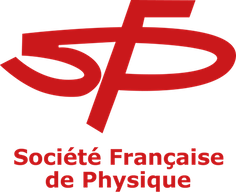Présidents de session
Instrumentation
- Sabrina Sacerdoti (APC-Paris,France)
Instrumentation
- Sabrina Sacerdoti (APC-Paris,France)
The high reflective mirrors of the gravitational waves detector LIGO & Virgo present in the coating many micrometer size defects that scatter the light in the interferometer. This scattered light induces a loss of the laser power of the order of a few tens of parts per million (ppm) and a phase noise because of the recombination with the main beam after reflection on the tube walls. This...
Proton therapy is a tumor treatment taking advantage of the Bragg Peak, a very sharp peak that enable a highly localized energy deposition at the end of particle range. However, the determination of the Bragg peak position is subjected to uncertainties that requires the establishment of safety margins during the irradiation of the patient, therefore decreasing the targeting efficiency in favor...
Diamond is a promising material for particle detection due to its very high resistivity, excellent charge transport properties (high mobility and long lifetime) and its high radiation hardness. Therefore, diamond is a particularly interesting material for studying charged particles such as alpha particles or fission fragments. For this purpose, a monolithic diamond ΔE-E telescope is under...
In order to study the internal structure of nucleons and nuclei and address some important outstanding questions in nuclear physics, a new Electron-Ion Collider (EIC) is planned to be built at Brookhaven National Lab (NY, USA). The EIC will collide a high energy proton/ion beam with a high energy electron beam. High performance detectors will be used to detect the particles created in the...
The ATLAS experiment at the Large Hadron Col-
lider (LHC) is operated at CERN and measures proton-proton
collisions at multi-TeV energies with a repetition frequency
of 40 MHz. Within the phase-II upgrade of the LHC, the
readout electronics of the liquid-argon (LAr) calorimeters
of ATLAS are being prepared for high luminosity operation
expecting a pileup of up to 200 simultaneous...
The Phase-II upgrade of the Large Hadron Collider (LHC) will increase its instantaneous luminosity by a factor of around 10 leading to the High Luminosity LHC (HL-LHC). At the HL-LHC, the number of proton-proton collisions in one bunch crossing, also known as pileup, increases significantly, putting more stringent requirements on the LHC detectors electronics and real-time data processing...
The Belle II Silicon Vertex Detector (SVD) is part of the Super B factory composed of the asym-
metric energy e + e − collider SuperKEKB and the Belle II experiment and is used to identify decay
vertices as well as reconstruct tracks and provide particle identification information.
In order to correctly reconstruct tracks, the position of the hits created by charged particles...
With the project of neutrino tagging, we propose a new way to study the yet unknown parameters of neutrino physics. The neutrino tagging technique consists in instrumenting the beamline of a long baseline experiment with Silicon trackers, that can precisely measure the properties of the charged particles that participate in a two-body decay, producing neutrinos. The properties of a...
L'expérience Ricochet a pour but de mesurer le processus CENNS (interaction élastique cohérente neutrino noyau) à basse énergie avec une précision de l’ordre de 1% afin d'y confronter le modèle standard et de rechercher de possibles signes de nouvelle physique. Elle sera située proche du réacteur nucléaire de l'institut Laue Langevin à Grenoble fin 2022. L'expérience sera composée de deux...

